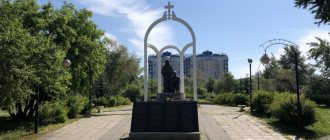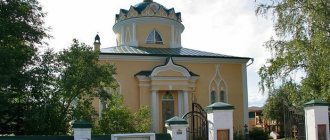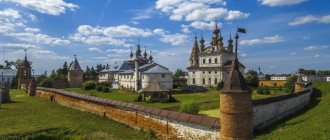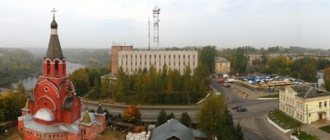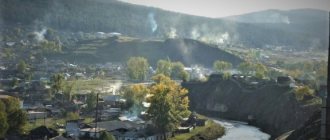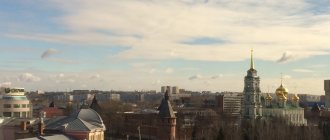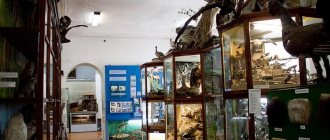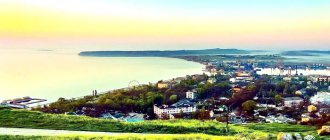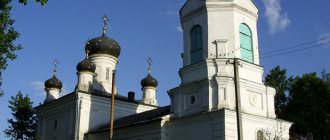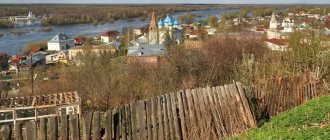Toropets (Russia, Tver region, Toropets)
Toropets, lost in the wilderness, is famous for its flat baroque, ringing silence and clean air. Today it is difficult to even imagine how, in such an impassable swampy area, cut by a network of water channels and rivulets, our ancestors paved a busy trade route “from the Varangians to the Greeks.”
How to get there? From Moscow to Toropets it is most convenient to travel along the New Riga highway [M 9], the distance is 401 km (from Tver - 331 km).
The Toropetsk land is amazing and fabulous. Located away from industrial giants, it is not for nothing that it has gained the reputation of the most environmentally friendly corner of Europe. It is protected by dense forests, shifting swamps of swamps and crystal lakes (and there are 250 of them in the area, with a total water surface area of more than 8 thousand hectares).
Story
Between the upper reaches of the Western Dvina and the Toropa River there was once a small principality. It bordered the lands of Novgorod, Smolensk and Polotsk. The center of this principality was Toropets, which was first mentioned in chronicles in 1074. Mstislav Mstislavovich ruled here then, and later his son David Mstislavovich, who died in 1226 in a battle with the Lithuanians.
There are no attractions left in Toropets that date back to the Middle Ages. But in the center of the city, ancient ramparts have been preserved, probably buried under the Toropets prince Mstislav the Brave.
In the 17th century, the city was captured by the Poles. The residents quickly got rid of the invaders, but the Ukrainian Cossacks immediately arrived, and they managed to fight off their onslaught with difficulty. Toropets by that time had become a trade and craft center. It is not surprising that he attracted the attention of unfriendly neighbors and militant Cossacks.
At the beginning of the 20th century, the city had a population of seven and a half thousand people. There were 18 churches, one and a half thousand residential buildings and more than 20 factories and factories.
No need for manna
Photo - Natalya Lvova
About Toropets, and where is its emphasis
March 16, 2015 Natalya Lvova
The bus leaves at seven in the morning from the Tushino bus station in the direction of Pskov. You take a ticket to Toropets , and you arrive in Toropets - the emphasis is on the second syllable. True, not right away. The handsome bus drops off passengers in Nelidovo, then only on a cheerful minibus with a chanson. It’s not profitable to drive a bus, there are three passengers to the city - a young lady who was prepared for the test, a baby in her long bag that looks like a small kayak, and me. We jump along a crooked road. I ask my fellow traveler if I need help? She doesn't seem to be afraid of anything. Explains to me how to get to the hotel: straight, straight.
City square, we've arrived. I stop at the memorial stand “Significant dates of the land of Toropets” and start reading from the first line: 1074 – the first mention of Toropets in the Laurentian Chronicle. When I get to the entry from 1950, which says “by the resolution of the State Committee of the Council of Ministers of the RSFSR for Construction Affairs and the Collegium of the Ministry of Culture dated July 31, 1970, the city of Toropets is classified as one of the 115 cities of Russia that are monuments of national culture,” I do not have time to be surprised by the oddities of the chronology, because behind is heard: “I’m running after you!” It was my fellow traveler, fearlessly swinging a kayak with a child, who decided to accompany me to the hotel.
The administrator gives out the key with a recitative mantra especially for visitors: we have no work here, the young people are drinking themselves to death, only the old money is left.
The bright sun is on the street, the drunken youth can’t see anything, but the slightly shabby, affectionate Lenin is right there. A plywood mermaid and a scientist cat are nailed to a tree trunk - a kindergarten. You can get into the neighboring yard by sliding down an icy path and then firmly grasping the railing. In front of school No. 1 is the first monument to the Teacher in the country.
The city looks like the result of a filming expedition: film makers arrived, set up the scenery of the stone merchant houses, casting was carried out so that the faces would fit the crowd, costumes were sewn. And then for some reason they gave up on this movie and disappeared. The residents slowly changed into their own clothes. They hung signboards on the decorations: “Caprice” - this means a hairdresser’s, “Profitable and tasty - entrance from the yard”, “Second hand”, “Bargain store - trading along the facade is prohibited 10 meters”, “Russian vegetable garden - the best possible”, “Minutka” - a cafe, of course, - opening hours from 8 to 16. The city protects, warns, advises, it is real, with stove heating, and in the bright sunlight the entire city smokes from chimneys. Toropets was not badly damaged during the war. It was liberated from the Germans already in January 1942, and neighboring Rzhev, for example, only on March 3, 1943.
The station was bombed, but the houses and churches survived. The occupation lasted 5 months, during which time the partisans destroyed the German headquarters, and the Germans responded by driving most of the residents into the Church of the Assumption of the Blessed Virgin Mary and planning to burn them. According to the recollections of school teacher Evgenia Fominichna, they stood in a crowded church for a day until a man was brought to the commandant’s office, who, calling himself a partisan, as they say now, “took responsibility for himself.” Evgeniya Fominichna says this man himself came and surrendered, and the residents were released. The exhibits in the local history museum remained: giant-sized straw sandals and homemade boots for the winter, sewn by some handy German: a leather sole with a heel covered with overcoat cloth with a prudent strap at the back “one size”.
The Museum of Local Lore is the most beautiful building in Toropets, because it is the Church of the Epiphany, built in 1764 by the merchant Fyodor Gundorov. And there is no other room yet. The director's office is modestly located in the altar. Visitors are greeted by a brutal bust of the honorary citizen and absolute “king of animals” trainer Gladilshchikov, whose stone biceps you can try to move.
There are many active churches in Toropets. At the Saturday morning service there are three parishioners, no one goes to Communion. One of them explains in my ear that the communists have taken away all faith from the townspeople, that at Christmas there are only about 10 people standing, that there are few parishioners, but all of them are of high quality. Poet and engineer Oleg Ovsyannikov is categorical in rhyme:
We don't need manna in our mouths.
Our strong Russian people.
In 1869, Vasily Belavin, the future Patriarch Tikhon, graduated from the religious school in Toropets. The rector, Father George, began to assemble a museum in his memory. People were simply carrying things from a long time ago, but there was nothing from the patriarch himself - what personal things he might have had - there was nothing here. An entire department of invisible front workers was engaged in the destruction of any documents relating to him. And about the search and acquisition of relics is in the book of Archimandrite Tikhon Shevkunov “Unholy Saints”. Tours are by appointment, so you can’t go through them. But no one can tell it better than Father George himself. For him, as for the staff of the local library, there is no scenery in this city, but a living life that has never been interrupted.
Rising above the Toropa River, I really want to write it, is a “stuffed” airplane. This is not a very favorite monument among city local historians. The communists brought it in, they say. There were no famous pilots in the city; the plane itself was post-war, Su-9, model 1957.
There is no monument to Prince Alexander Nevsky in Toropets. In 1239, 19-year-old Alexander got married here to the Polotsk princess Alexandra Bryachislavna. According to legend, at the same time the miraculous Korsun Icon of the Mother of God, revered as a great shrine, arrived with the princess from Polotsk - a century earlier it had been brought from Byzantium by St. Euphrosyne of Polotsk. Until recently, it was kept in the collections of the Russian Museum, and now it has been transferred to the parish of some VIP village. The bridge over Toropa is hung with memorable barn castles of marrying contemporaries.
In the square in front of the garment factory, young people in cars circle the ice, they skid, the brakes squeal. That schoolteacher, who as a child stood in the church destined for burning, also said that now people have somehow become stupid because there are many temptations.
In the night, a handsome outer space bus glows with light bulbs. At fifteen minutes to two he will open the doors to the frozen passengers to the music of the Zhiguli car, shrilly cutting circles around the icy square.
Main
Lateral
Tags: Christianity, Photography, Toropets
People: Tikhon (Shevkunov) Archimandrite, Tikhon (Belavin) Patriarch
List of attractions of Toropets
On the territory of this small city there are more than forty cultural monuments. Among the buildings of high historical value, it is worth highlighting the Korsun-Bogoroditsky Cathedral.
The ancient fortress has not survived. The Kremlin, built in the 11th century, was destroyed long ago; all that remains of it are the embankments, which, by the way, offer an excellent view of Toropets. The list of the best attractions of this ancient city includes the following:
- Epiphany Church.
- Monument to the teacher.
- Museum of Local Lore.
- Monument to Admiral Peter Rikord.
- Trade area.
- Transfiguration Church.
- St. Tikhon's Monastery.
A city lost among forests and swamps
Part of the forest land belongs to the highest, first category. The natural reserve fund is about 29.5 thousand hectares. It was these dense and majestic forests, like impregnable walls, that in the old days received the name Okovetsky. The famous route to Ilmen and Ladoga “from the Varangians to the Greeks” ran here. From those ancient times, two settlements and a large burial mound group have been preserved on Lake Rucheyskoye, and near the villages of Akhromovo and Gorodok, five settlements on the Torope River, widely known among archaeologists, still keep their secrets. Two ancient settlements (Bolshoye (A) and Maloe (B)) have been preserved in Toropets itself, showing all visitors their gently sloping ramparts as a sign of ancient origin. There are many natural monuments here: for example, Lake Selskoe, Chistoe, Khmelino; Meshchoksky, Pavlovsky, Bubonitsky forests; islands on Lake Nagovye (Lipovy, Skurets, Delanets), etc. And at the biological station in the village of Bubonitsy, a program for the rehabilitation of orphaned bear cubs was launched.
Toropetsk "plank" baroque
Architectural fashion reached Toropets, which is remote and isolated from large cities, with a noticeable delay, and here its own distinctive school of architecture, the so-called “plank” baroque, took shape. The usual compositions of churches are being replaced by tiered ones, but they have not achieved the sculptural richness that is inherent in the churches of the central regions of the Tver region and the Moscow region. The apses take on faceted shapes, the layouts become more complex, and the churches themselves grow up to two floors in height. But the main advantage of cult monuments is their extraordinary flat decorative decoration, as if carved from a wooden board. It is amazing how all this variety of original applied forms, smooth lines, outlines, rods and cornices is brought to a harmonious and consistent sound.
Krivitesk – Toropets
Toropets traces its history back to 1074, from the first documentary mention associated with St. Isaac Pechersky - in the world a merchant named Chern, originally from Toropa. On the site where Cherny's house stood, the Trinity-Nebin Monastery was founded. For a long time, Krivichi people settled in these places, and therefore the local fortress was named Krivitesk. In the 9th century. Krivitesk was subordinate to the Novgorodians, at the end of the century it became dependent on Kyiv, and in 1115 Smolensk turned it into a border outpost of its possessions. However, already in the 12th century. Toropets is mentioned as an independent princely appanage. In 1239, Alexander Nevsky got married here to Alexandra, the daughter of the Polotsk prince Bryachislav, and his father Yaroslav was married to Theodosia, the daughter of the Toropets prince Mstislav the Udal. The establishment of family ties in Rus' was dictated by the most important political aspects; in this regard, one can imagine how significant the role of Toropets was on the western border. The fortress not only served as a citadel and resisted frequent raids by Poles and Lithuanians, but was also a center for the development of crafts, culture and trade. In 1503 the city went to Moscow. After countless enemy invasions, fires, floods, plague epidemics and upheavals of the Time of Troubles, the town was rebuilt again and again, and by the end of the 17th century. turned into a large shopping center.
Map of Toropets attractions
- Korsun-Bogoroditsky Cathedral
- Epiphany Church
- Monument to P. Ricord
- House with a portico
- House of merchant Beznosov
- Church of the Intercession
- St. Nicholas Church
- Kazan Church
- Church of the Nativity of John the Baptist
- Transfiguration Church
- Trinity-Nebin Monastery
- Ascension Church
- Church of the Consolation of the Blessed Virgin Mary
- Church of the Nativity of the Virgin Mary
- All Saints Church
A, B - settlements in Toropets (Big and Small)
Local merchants and celebrities
One can only be amazed at the enterprise, resourcefulness and courage of the merchants, who, in search of expanding commercial activities, mastered Pskov, Polotsk, Smolensk, Riga and foreign Danzig, Frankfurt am Main and Koenigsberg. But this is not enough. Caravans of Toropets merchants could be seen in Poland, England, Holland and even China (in the 1650s, Toropets resident F. Baikov became the first ambassador to China). In 1706, Peter I visited the city. He was pleasantly surprised by the trading successes of local merchants, after which he ordered them to pay a duty equal to that levied on foreign traders. Among the famous natives of the region we can name the head of Kamchatka P. Ricord, Vice Admiral M. Ratmanov, in whose honor the island on the eastern borders of Russia is named, the great Russian composer M. Mussorgsky, Patriarch of Moscow and All Rus' Tikhon.
Provincial town atmosphere
Once in Toropets, in its architectural environment, it seems that time has turned back and it is the end of the 18th century. - beginning of the 19th century One traveler who visited the town wrote about this: “People here live so peacefully that, if you consult the scandalous news of St. Petersburg and Moscow newspapers, you will not find a single trial generated by native slander, not a single denunciation of the judge and the police officer. Antiquity, very antiquity, quiet... peaceful.” Even today, a leisurely way of life seems unusual to a visitor from a large metropolis. The peak of activity occurs in the morning, when the market square in the city center is bustling with trade, buses and cars are scurrying about, by noon it subsides, and by the evening the town is empty and quiet, and only in small cafes and restaurants can you hear music and laughter. As it begins to get dark, you can go to the opposite shore of Lake Solomeno to admire the evening panorama of Toropets. It is from this point that the city-forming role of the Korsun and Epiphany temples, which flaunt their chiseled silhouettes against the background of the sunset, is obvious. It’s best to start a walk around the city by visiting these temples on the territory of the former Kremlin, which was a well-fortified island fortress.
Sights of Toropets
Korsun-Bogoroditsky Cathedral (1) (Komsomolskaya St.) was built in 1676 by decree of Tsar Alexei Mikhailovich to replace the dilapidated wooden Odigitrievskaya Church. After the fire of 1792, the temple was rebuilt in 1804. Its design was drawn up by the Smolensk architect O. Spirkin. There was not enough money to build the church, and Emperor Paul I himself was among the benefactors. At one time, the cathedral contained a copy of the greatest Russian shrine - the miraculous icon of the Korsun Mother of God, according to legend, which belonged to the wife of Alexander Nevsky and was left here by her in memory of her wedding with the prince. On the same side of the street, a little ahead, there is a unique monument, the crown of the local school of architecture - the Church of the Epiphany (2) (1765), built at the expense of the merchant F. Gundorov. Today the church houses the Toropetsk Museum of Local Lore (Komsomolskaya St., 2, (48268) 2 26 96, 2 14 92, 11.00–18.00, except Mon., Tue. - excursion day). Opposite the northern façade of the temple there is a monument to P. Rikord (3) , the aforementioned famous native of the city, scientist, diplomat and shipbuilder. Let's cross to the other side of the Toropa River across the bridge. To our right will be the market square. Here is a house with a portico (4) - one of the few buildings that meets the canons of classicism. In the city you can find several more interesting examples of civil architecture, designed in the local Baroque tradition. These are mainly merchant mansions. The most noticeable of them is the house of the merchant Beznosov (5) (1750-1760s), located to the left of the bridge. Let's return to the main thoroughfare of the city - st. Sovetskaya, and we will drive along it 2-3 blocks until the intersection with the street. Eremenko. Behind the openwork crowns of the square you can see the complex of the Intercession and St. Nicholas churches (Tikhonovsky Monastery). The Intercession Church (6) - a magnificent Baroque monument (1777) - at the time of its consecration was the largest parish church in Toropets. A large quadrangle with rounded corners carries an octagonal tier supported by four internal pillars, which in turn is completed by a dome on a blind drum. The facades of the church are richly designed plastically: various profiles, drafts, rustication create an amazing artistic image. St. Nicholas Church (7) is one of the first stone buildings of the monastery of the same name that existed here in ancient times, abolished by Catherine II in the 18th century. Single-headed, like an “octagon on a quadrangle”, it bears on its facades a “marvelous” stone pattern, complemented by emerald-ocher tiles. The temple was consecrated in 1697. During the formation of local architecture (after the 1660s), religious buildings, with a picturesque layout of volumes, had rather modest sizes. The Chetverik, as a rule, was decorated with a number of kokoshniks and had one or five chapters. An example is the Kazan (8) (1698-1765, Solovyov St.) and Spaso-Preobrazhenskaya (10) (late 17th century - early 18th century, Nikitin St.) churches. Often, façade surfaces were decorated with polychrome tiles, in which the artistic influence of Belarusian-Ukrainian motifs is noticeable. Between these temples, on the site of the disappeared Ivanovo Monastery, the mention of which was first found in documents of 1540, there is an inactive Church of the Nativity of John the Baptist (9) (1704, K. Marx St.). Having made a short circle around the city, we again return to the Torope River and the bridge over it. From here you have the best view of the Trinity-Nebin Monastery (11) , which has been in oblivion for many years. And before completing the sightseeing, I would like to dwell on one more striking work of Toropets architecture - the Church of the Nativity of the Virgin Mary (12) (1742-1762), located away from the historical center, across the Ukleinka River.
In the picturesque surroundings of Toropets there are many noble estates scattered - Znamenskoye, Mikhailovskoye, Tsvetki and others. Among them, the Khvorostyevo estate, created in the spirit of a Palladian villa, stood out for its high artistic level. The front part of the estate consisted of a “temple-like” three-story palace with a belvedere, connected to the outbuildings by semicircular colonnaded galleries. Today, the only outbuilding that has survived from the ensemble is the dilapidated Trinity Church and a park that turns into a forest.
Korsun-Bogoroditsky Cathedral
The most beautiful ancient churches in Russia are located near bodies of water. The list of such buildings is quite extensive, one of them is the Korsun-Bogoroditsky Cathedral, located on the shore of Lake Solomeno. True, it is difficult to call it an ancient building. It is just over two hundred years old, which is not old for an Orthodox church. But, of course, this is one of the most beautiful churches in the Tver region. It is designed in the Baroque style, built according to the design of the architect Osip Spirkin.
Epiphany Church
The temple was erected in the second half of the 18th century. Funds for construction were allocated by local merchant Fyodor Gundarev. The Epiphany Church is one of the main attractions of Toropets. Experts in Russian architecture claim that there are no similar buildings in other Russian cities. This temple is an example of the Toropets architectural school. An interesting detail of the building is the unusually located bell tower. Now within the walls of this temple there is a local history museum - another attraction of Toropets that you should definitely visit.
Museum of the History of Photography and Russian Life
In this place you can see the history of the city with your own eyes. Here are many photographs of Toropets from the beginning of its foundation. Ancient estates, churches, houses and parks - today they can only be seen in photographs. Among the museum exhibits you can also find cameras, modern and ancient. All photographs are grouped under subcategories. For example, “Temples”, “City Yesterday and Today”.
The second floor is occupied by shelves with cameras. Among them you can even find very old specimens. On the ground floor there is an exhibition of Russian life. An original corner with objects of Russian everyday life was organized within the walls of the museum. A small upper room has been recreated here, equipped with all the elements of that time - an iconostasis, embroidered towels, a huge table, woven paths. All the items that are presented in this corner - pots, towels, fishing gear and other exhibits - can be touched and examined by holding them in your hands.
Trade area
In the middle of the 16th century, shopping malls appeared on the territory of the historical center of the city of Toropets, Tver Region. They were located opposite the Big Bridge. There were about forty shops here then.
Brisk traders offered cloth, silk and other haberdashery goods. Closer to the Church of the Savior there was a grain row. Trade was also carried out in the central square, where peasants came from the villages. They sold hay, firewood, straw and other products of rural industry. There was a “fish sale” on the shore of Lake Solomeno. The brisk trade on the square is a thing of the past. But this Toropets attraction is a must-see.
Monument to the teacher
In the seventies of the last century, a monument was erected in Toropets, dedicated to everyone who “sows the reasonable, the good, the eternal.” Today it is one of the attractions that invariably attracts tourists. The monument was designed by the Moscow sculptor Orekhov. The grand opening took place on the day of the city's 900th anniversary. The sculpture is located on Komsomolskaya Street, opposite secondary school No. 1. This sculpture is the first monument to a teacher installed in Russia.
St. Tikhon's Monastery
The history of this monastery began quite recently. The convent, located in Toropets, was founded in 2005. But, of course, this landmark of the Tver region has a backstory.
Around the second half of the 11th century, a monastery was founded on the outskirts of the city, on the banks of Zalikovye. In the first third of the 14th century, the city suffered two disasters - a flood and a fire, which destroyed almost all the buildings. These disasters were so extensive that Toropets had to be rebuilt.
The monastery, which was located on the site of a convent founded in the 2000s, is known thanks to a scribe book compiled during the reign of Ivan the Terrible. The building was restored in the 14th century. In the 17th century, a stone monastery stood here, which played an important role in the cultural life of Toropets. Under Catherine the Great, a manifesto was signed, according to which the lands were withdrawn from the monastery property and transferred to the state.
In 2005, the Holy Synod approved the creation of an Orthodox convent in the city of Toropets. In 2006, services began. On the territory of the monastery there are St. Nicholas and Intercession churches. The first was founded in the 16th century. The second - in the 18th century. These churches have survived, but in very poor condition.
Museum of Patriarch Tikhon
In the center of Toropets you can come across a small house. Not so long ago it was simply considered an old house, of which there are a huge number in the city. The only difference was that on its facade there was always a small plaque on which it was written that the future Patriarch lived here. Today it is a museum. Recently, part of the house was purchased and furnished with exhibitions that tell visitors about elements of the life and life of the priest John Bellavin and about his famous son.
The museum is of particular interest to believers. Father, who initiated its creation, personally conducts excursions. Some of the attractions of the city of Toropets are represented by entire natural reserves.
Excursions and museums
Holidays in Toropets are suitable for lovers of peace and tranquility. There is only one museum here - a local history museum. It presents a unique exhibition that allows you to get acquainted with the history of the city. Monasteries and temples are mentioned above. But the beauty of this locality is not only in the sights, but also in its location. The city is located in the western part of the Valdai Hills. Where once there were dense forests that brought death to strangers. Today there are many tourist centers in the vicinity of Toropets.
There are no excursions that exclusively include the sights of this city. However, Toropets is included in many tourist routes in the cities of the Tver and Novgorod regions. Thus, one of the most popular multi-day tours involves visiting cities such as Velikiye Luki, Polibino, Vitebsk and, of course, the town discussed in today’s article. The journey lasts three days. The cost of the excursion is 10,900 rubles.
Another multi-day tour of the Tver and Novgorod regions includes visits to Toropets, Naumov, Pushkin Mountains, Veliky Novgorod and other attractions. The cost of the excursion is 15 thousand rubles.
What is interesting in the city of Toropets?
The appearance of Toropets cannot be compared with any other city in Russia. This town is of particular interest to history buffs. Toropets is famous for its magnificent architectural structures, which leave a mark on the memory for a long time. There are many wonderful temples and monasteries here, the history of which goes back to the distant past. Multi-storey buildings are rare in the city. But this fact only enhances its attractiveness. The city seems to breathe history. Photos of Toropets attractions with their descriptions will be presented in this article.
You may be interested in: The best hotels in Imatra - review, ratings, services and reviews
There are many interesting places to visit in the city and its surroundings. These are cultural monuments, architectural masterpieces, objects of the region’s spiritual heritage, and natural attractions. Toropets is home to a large number of temples, cathedrals, churches and monasteries.
Reviews
Guests of Toropets claim that it is a very green, well-kept city. When visiting it, it is worth paying attention to the monuments of Soviet times, of which there are many. One of them is located at the entrance to the city. The reservoir, on the banks of which local residents spend their leisure time, is very clean. This is one of the favorite places of the townspeople. According to reviews, Toropets has a good beach. This city is a great place for a family vacation.
Toropets is located 260 km from Tver. You can get here from the regional center. Trains run from Moscow, St. Petersburg, Bologoe, Velikie Luki. There is also a bus connection with the capital and the city on the Neva.
Alexander Nevsky Oak
There is an unusual tree in Toropets. It looks like all the others, but has an amazing origin. They say that this oak was planted from the seed of a tree that Alexander Nevsky planted back in 1239. Today the oak is fenced. It grows opposite the city museum.
Many tourists advise paying attention to some of the monumental buildings in the city.
